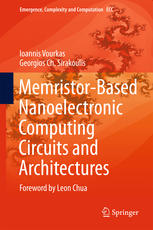

Most ebook files are in PDF format, so you can easily read them using various software such as Foxit Reader or directly on the Google Chrome browser.
Some ebook files are released by publishers in other formats such as .awz, .mobi, .epub, .fb2, etc. You may need to install specific software to read these formats on mobile/PC, such as Calibre.
Please read the tutorial at this link: https://ebookbell.com/faq
We offer FREE conversion to the popular formats you request; however, this may take some time. Therefore, right after payment, please email us, and we will try to provide the service as quickly as possible.
For some exceptional file formats or broken links (if any), please refrain from opening any disputes. Instead, email us first, and we will try to assist within a maximum of 6 hours.
EbookBell Team

4.3
8 reviewsThis book considers the design and development of nanoelectronic computing circuits, systems and architectures focusing particularly on memristors, which represent one of today’s latest technology breakthroughs in nanoelectronics. The book studies, explores, and addresses the related challenges and proposes solutions for the smooth transition from conventional circuit technologies to emerging computing memristive nanotechnologies. Its content spans from fundamental device modeling to emerging storage system architectures and novel circuit design methodologies, targeting advanced non-conventional analog/digital massively parallel computational structures. Several new results on memristor modeling, memristive interconnections, logic circuit design, memory circuit architectures, computer arithmetic systems, simulation software tools, and applications of memristors in computing are presented. High-density memristive data storage combined with memristive circuit-design paradigms and computational tools applied to solve NP-hard artificial intelligence problems, as well as memristive arithmetic-logic units, certainly pave the way for a very promising memristive era in future electronic systems. Furthermore, these graph-based NP-hard problems are solved on memristive networks, and coupled with Cellular Automata (CA)-inspired computational schemes that enable computation within memory. All chapters are written in an accessible manner and are lavishly illustrated. The book constitutes an informative cornerstone for young scientists and a comprehensive reference to the experienced reader, hoping to stimulate further research on memristive devices, circuits, and systems.